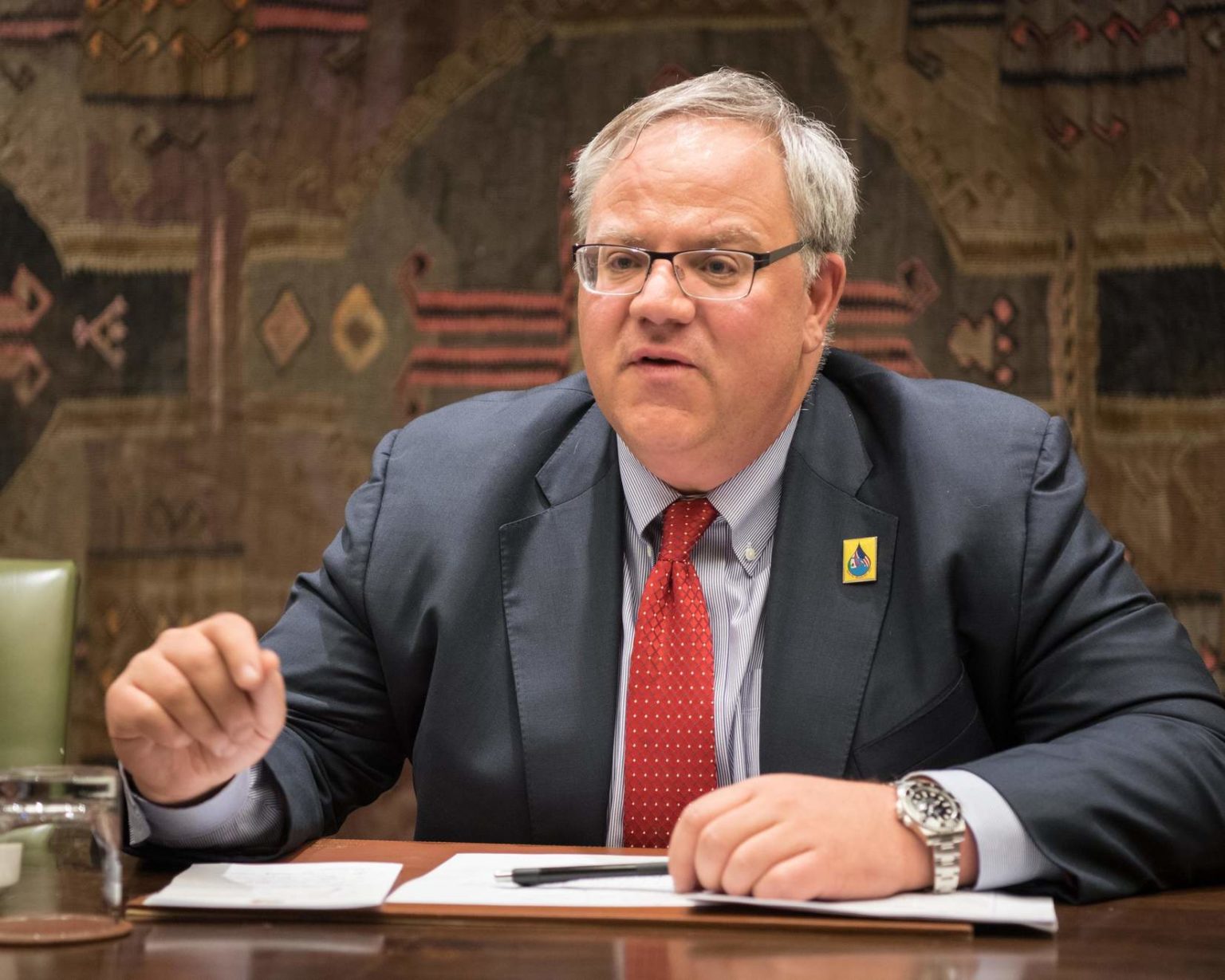This is a guest post from ClimateDenierRoundup.
Last week, Department of Interior (DOI) Secretary David Bernhardt testified in front of the House Natural Resources Committee about his leadership of the agency, flanked by “swamp monsters” in the audience highlighting his corruption.
When Rep. Huffman asked Bernhardt for specific examples of times when he told former clients “no,” when they asked for a policy change, he struggled to name a single instance. Remember, this is the man with so many conflicts of interest he has to carry them on a card, so he has plenty of former clients to choose from. After being pressed further by Huffman to name something specific, Bernhardt makes a reference to a “well control” rule.
That’s really where it gets interesting. Bernhardt’s industry clients actually praised the DOI’s well control rollback. And not only that, but the rule actually relies on the industry’s own guidance, effectively supplanting an Obama-era regulation with an American Petroleum Institute document.
As E&E’s Dylan Brown reported last week, the Project on Government Oversight (POGO) has been monitoring the DOI as it seeks to undo rules put in place after the 2010 Deepwater Horizon disaster that killed 11 and polluted the Gulf of Mexico with millions of barrels of oil. POGO noticed that in the final version of the rollback, DOI advises industry to follow the advice in a document from the American Petroleum Institute. That document provides for drilling to continue when conditions might otherwise require them to stop, like when the well pressure is fluctuating outside safe parameters, as it does before a blowout.
Importantly, POGO argues, the fact that DOI slipped this reference into the final draft with it not having appeared in previous versions means the public didn’t get an opportunity to comment on it, opening it up to an easy legal challenge. Though the text of the API bulletin is not included in the text of the regulation, it was inserted “by reference” in the final draft of the rule, giving it the force of law without having first gone through the normal public review channel.
Instead of describing what drillers could do if pressure fluctuates, the DOI rule says they either must suspend drilling or “take further action in accordance with API Bulletin 92L.” Like the inclusion of industry language over at EPA, it appears as though the Trump administration is so lazy, incompetent, or brazenly corrupt it can’t even be bothered to pretend like it’s doing anything except whatever industry wants it to do.
And it gets worse. If you want to go look at the bulletin to find out what our government is allowing, you either have to buy it for $70 from API, or sign up for an API account. But even then, you can only view the document and not copy anything — not exactly a helpful way to engage with a document that is necessary to read in order to provide an informed comment in the regulatory process.
If you don’t want to pay API or hand over your personal info, you could go in person to a government facility in Virginia, some 30 miles outside of D.C. But even then, POGO’s David Hilzenrath found, you’re apt to get the run-around: when he visited, employees at that facility had never before had a visitor looking for information like that, and struggled to figure out how to grant him access.
Once Hilzenrath finally got to see the (correct) document, he found that it “referenced documents [that] are indispensable” to understanding it. And these 15 other API documents that are apparently “indispensable” weren’t made available at all.
Weird that the same administration that demands confidential environmental health data be made public in order for it to inform public health protections is perfectly happy to keep people from easily accessing the industry documents it uses to tear down public health protections.
Almost like that tobacco-industry-derived rule, and the administration of Donald “Drain the Swamp” Trump’s embrace of it, has nothing to do with scientific integrity, and everything to do with finding ways to put polluter profits over public health…
Main image: David Bernhardt in 2017. Credit: Bureau of Reclamation, public domain
Subscribe to our newsletter
Stay up to date with DeSmog news and alerts






